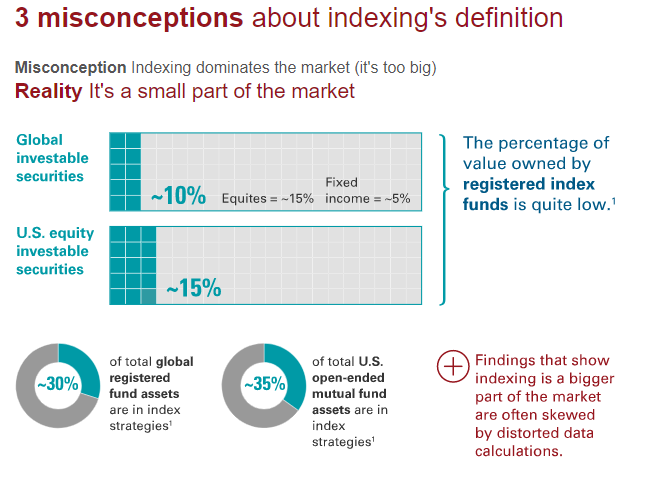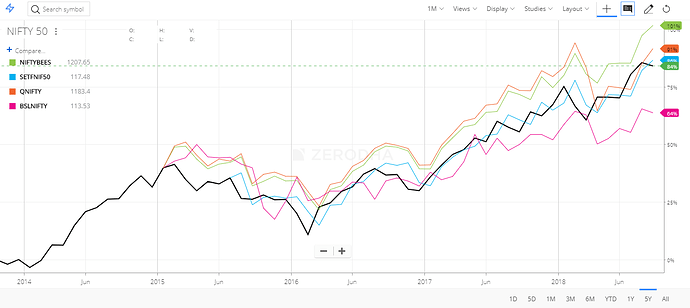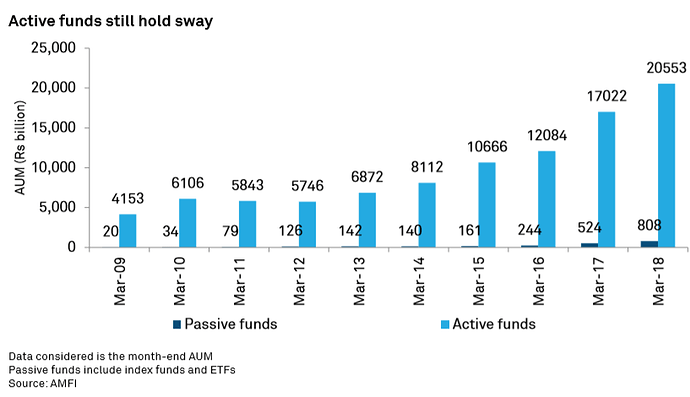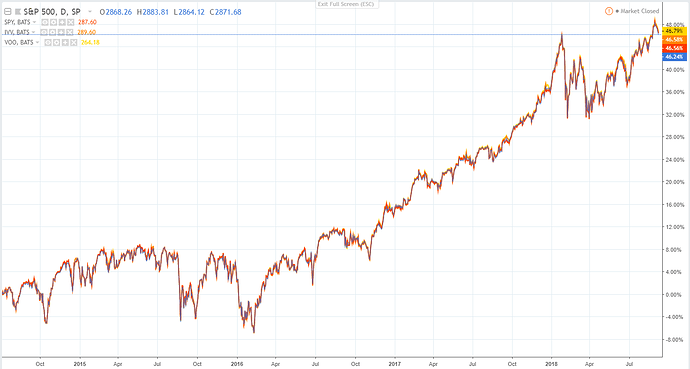Why do two ETFs tracking same Index produce different returns even when both claim to have same tracking error and similar expense ratio ? What are the different factors that produce this difference in ETFs ?
When it comes to ETFs, you need to observe 2 numbers - Price and the NAV. What you see on the trading platforms is the price the market is willing to pay, not the price of the underlying value. The AMC’s, at the end of the day disclose the NAV, which more or less represents the true value of the underlying.
Now, coming to your original question, the purpose of an ETF or an Index fund is to mimic the returns of the index. Not to underperform it or overperform it, but track the returns of the underlying index as closely as possible.
But in India, we’ve seen a few instances where Index funds had overperformed the index. This can be attributed to the poor management of the fund. You might ask, what’s wrong with a higher return? The mandate of an index fund is to mimic the index and if it overperforms then, that’s a red light and investors are better off staying away from the fund.
Why are the returns of 2 ETFs, tracking the same index different?
Because of the tracking error.
The Fund Manager would not be able to invest the entire corpus exactly in the same proportion as in the underlying index due to certain factors such as the fees and expenses of the Scheme, corporate actions, cash balance, changes to the underlying index and regulatory restrictions, which may result in Tracking Error with the underlying index. The Scheme’s returns may therefore deviate from those of the underlying index.
“Tracking Error” is defined as the standard deviation of the difference between daily returns of the underlying index and the NAV of the Scheme. The Fund Manager would monitor the Tracking Error of the Scheme on an ongoing basis and would seek to minimize the Tracking Error to the maximum extent possible. There can be no assurance or guarantee that the Scheme will achieve any particular level of Tracking Error relative to performance of the underlying Index. - NIFTY BeES SID
This is the reason why the reason of the funds differs from the Index in NAV terms.
Why does it differ in prices?
The simplest answer is supply, demand, liquidity. Take a look at this chart. It shows the prices of the some top ETFs( in particular order) and the performance against the Index.
In an ideal world, the price and the NAV should closely track the index. But in India passive products aren’t exactly popular. They make up just about 4% of the AUM of 25 lakh crores vs that of 35% in the US

For example, let’s compare the top ETFs by AUM that track the S&P 500 and their price movement vs the index.
This chart shows the comparision of SPDR S&P 500 ETF Trust, iShares Core S&P 500 ETF and Vanguard S&P 500 ETF vs the S&P 500. As you can see, all three closely hug the index. By the way these 3 ETFs have over $530 billion in assets.
In India all the Nifty ETFs put together won’t cross the Rs 50,000 crore mark. Out of this SBI Nifty 50 ETF alone account for Rs 38,800 crores.
Hope this explains your query
Forgot to mention this. Here’s a good example of divergences in NAV and Price. The Motilal N100 ETF (Nasdaq100) is trading at a Rs 120 premium to the NAV.
Again, in an ideal world, the market makers would have arbitraged this opportunity and brought the prices closer to the NAV, but given the inactivity and illiqudity in Indian ETFs, this is bound to continue.
Today at around 12:25PM, NIFTY is down around 5.5%. SBI NIFTY ETF is down 0.5%. Is this difference only due to the liquidity? Is there a more liquid ETF tracking NIFTY and BANKNIFTY?
This is a two year old thread giving useful data. Is percentage of equity market owned by ETFs and index funds increased in this time and by how much?
Thanks.
If I put a limit order to buy this ETF and if that is higher than the closing NAV declared by the AMC, will I be able to buy at the declared NAV after the close of trading?
In other words, assuming that market closes at the same NIFTY as right now, and ETF liquidity also does not improve, is it possible for me to buy the ETF at the underlying value?
Also I do not understand the liquidity part. Isn’t the fund house managing the ETF suppose to provide the liquidity?
@Bhuvan Nifty Bees is fairly liquid yet on Friday and even Today it didn’t fall as much as Nifty did, Friday Nifty was down 10 but Nifty Bees was only 5 odd percentage, why so?
Didn’t really understand the question. But the right way to buy an ETF is to use a limit order at the iNAVs shown on the AMCs sites.
You can in multiple of the creation units - which is about Rs 50 lakh. Not less than that.
AMC appoints market makers and if they see an opportunity when the price and NAVs are out of whack, they’ll step in arbitrage the price away. But maybe it’s harder during volatile markets.
Answered above
Thanks for the response.
If had placed a buy order based on iNAV today most likely it would not have executed because today SBI BANKNIFTY ETF was always trading at a higher price as compared to the BANKNIFTY. Is my understanding correct?
iNAV is the correct NAV of the ETF, which will be broadly equivalent to the Bank Nifty Index. The price might be way off than the iNAV.
iNAV can be 10 and price can be 80, for example.
But my question is if I place an order based on iNAV, it may not execute if the price is different.
Thanks.
Don’t ask for advice on public forums. Go t[quote=“nap, post:12, topic:46285, full:true”]
But my question is if I place an order based on iNAV, it may not execute because is price is different.
Thanks.
[/quote]
Of-course, that’s an issue with ETFs in low-liquidity markets like India. Better stick to index funds.
If you want to buy ETF’s better go with ETF’s by Nippon AMC (The BeeS ones) all their ETF’s have decent liquidity compared to other ETF’s.




